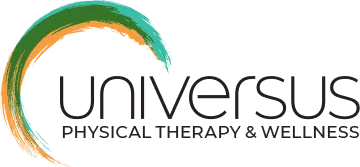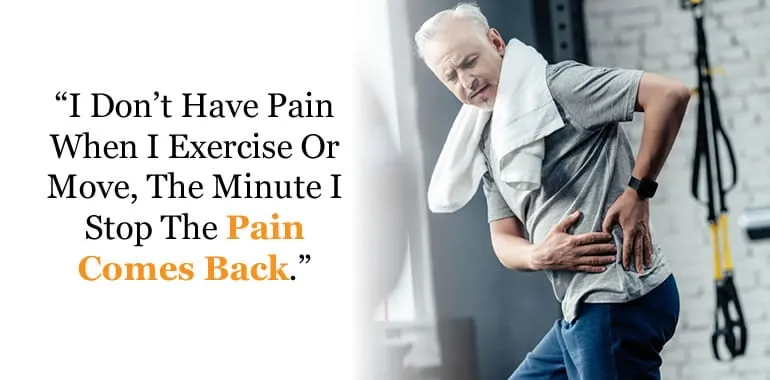“I can do everything, but with pain.” “The pain doesn’t stop me but it is always there.” These are statements I hear all the time from my patients. Here is another one: “I don’t have pain when I exercise or move, the minute I stop the pain comes back.”
What is going on here?? Well, what these statements tell me is that you have not gotten to the point of “disability” but there is definitely something that is OFF and needs to be addressed so that you DO NOT get to the point of DISABILITY.
So what is OFF in this case? First a little background…
Global vs. Local Muscles: If you think about your muscles (very simplistically) in terms of the bigger muscles (global muscles) and the smaller muscles (local muscles- which attach to the spine and joints), and then think about the function of these two groups. The global muscles are responsible for bigger movements/the muscles we train at the gym, an example of global muscles are your biceps, triceps and quadricep muscles. The local muscle group is responsible for keeping your spine in neutral, keeping you in good posture, keeping your head from sinking forward, an example of local muscles are your transversus abdominis (in deep core) or multifidus (deep in the back). Certainly you have heard of the global muscles and unless you have been to physical therapy, the local muscles might sound unfamiliar.
Training: When we train either of these muscles groups we do entirely different exercises. Training global muscles, we are looking for hypertrophy which is a structural adaptation and the result of overload training. When training the local muscle group we are utilizing a concept referred to as “low threshold motor control training”. WE NEED BOTH of these muscle groups to work together, efficiently and without compensation or lag in order to have a pain-free system.
Recent research on musculo-skeletal pain has focused on motor control changes associated with the pain state. The findings consistently observe that in the presence of chronic or recurrent pain, the subjects change their patterns or strategies for movement. The subjects use patterns or strategies for movement that are normally reserved for high load function (i.e. lifting, pushing, pulling, throwing, jumping, running, etc.) during normal postural control and low threshold functional activities (i.e. sitting, standing, walking). These altered strategies are considered compensations or muscle imbalances.
This explains why your neck is feeling tight while you are staring at your phone all day! This also explains why you can lift weights at the gym with little pain, yet sitting at your desk all day causes extreme lower back pain!
So, while you may have strong global muscles and you are “able” to do just about everything you need to do around the house or gym, that does not mean that your local muscles are performing optimally and you may be using substitution strategies for movement which are causing muscles imbalances, which you have probably had for years! (Especially if you have had either chronic or recurrent pain)
I hope this article has helped you learn the difference between the two muscle systems that exist in our body and the importance of training them differently and how these affect our pain and function.
If you have any other questions regarding this concept please reach out by replying to this email or calling us at 631-533-2888.


